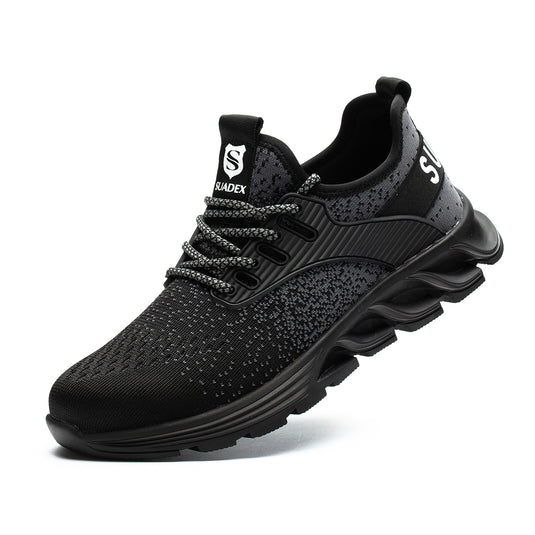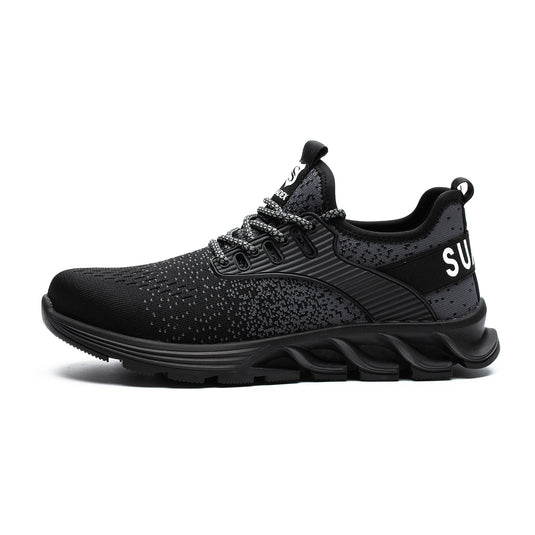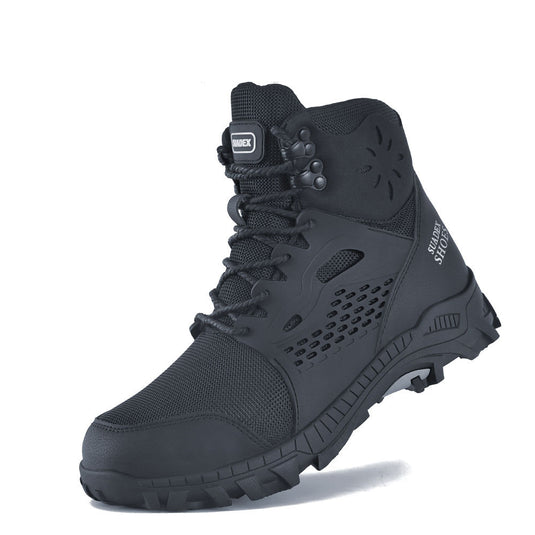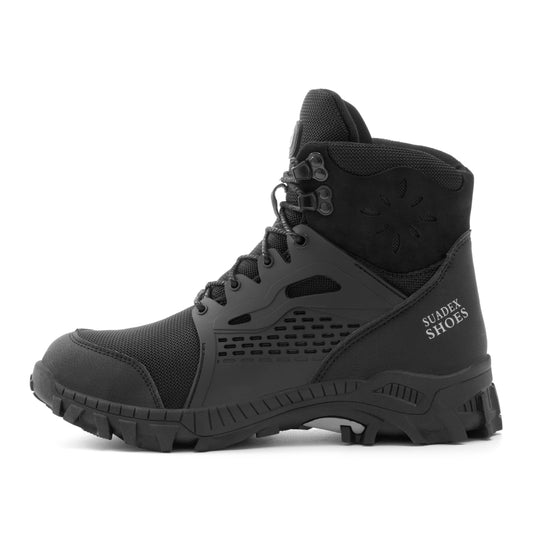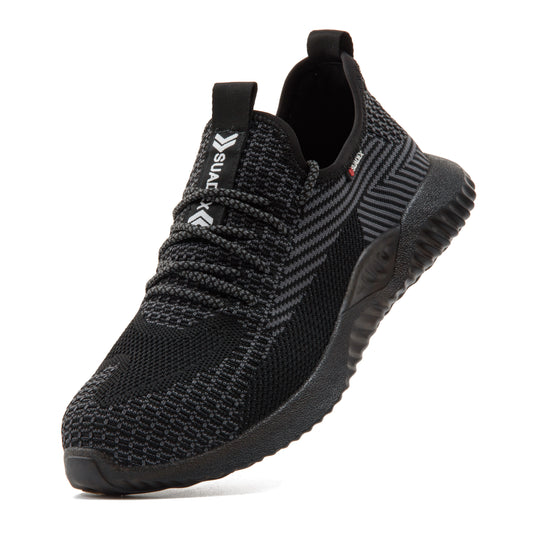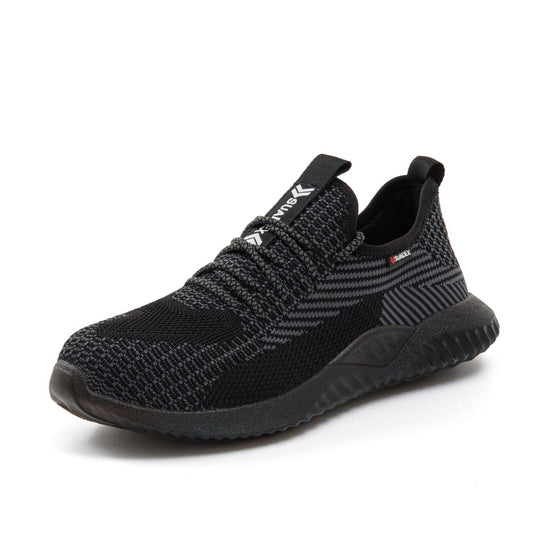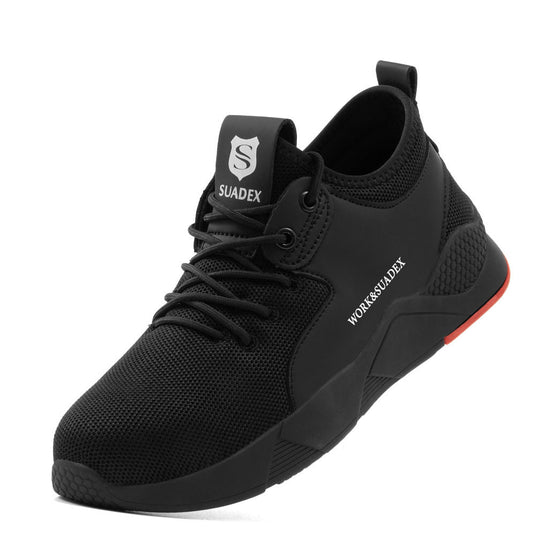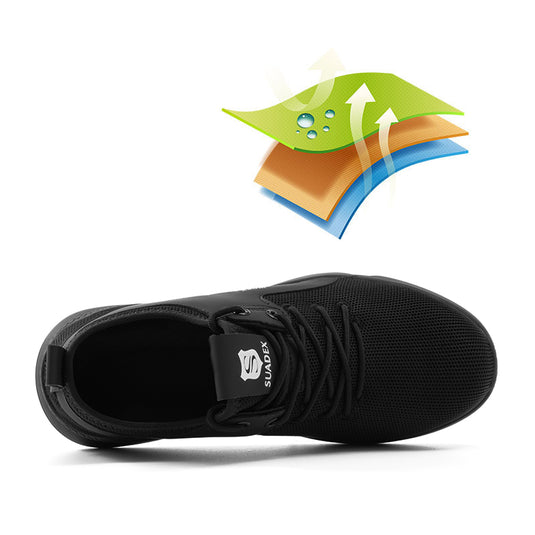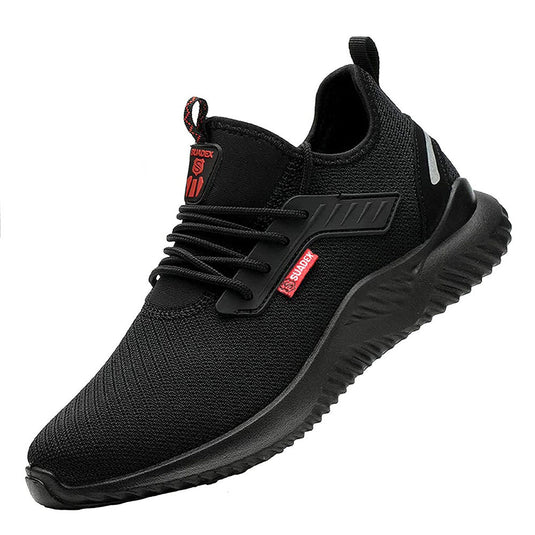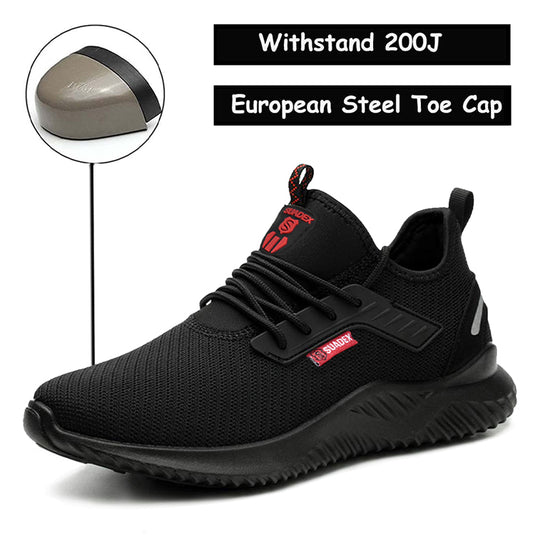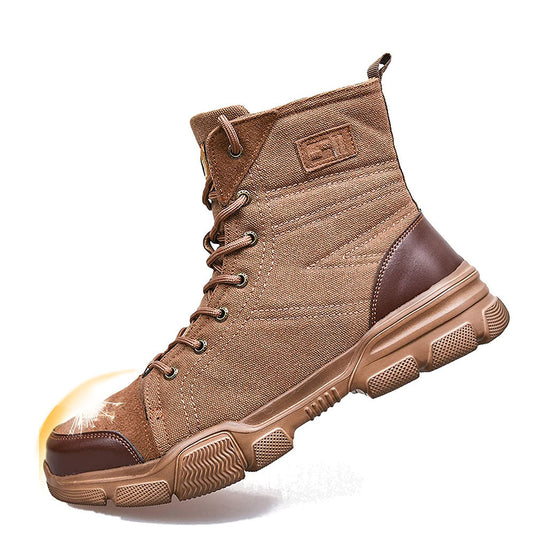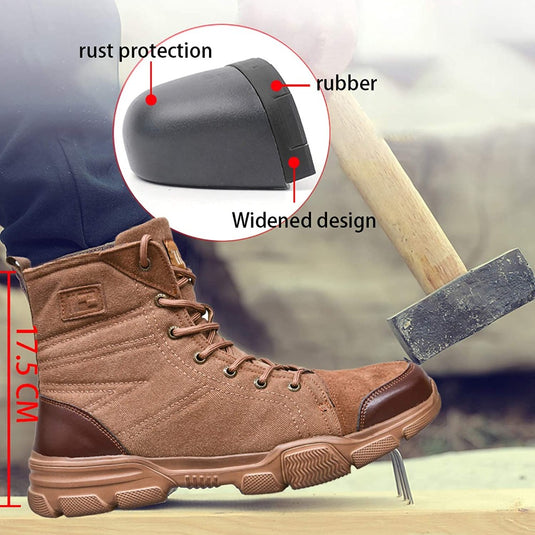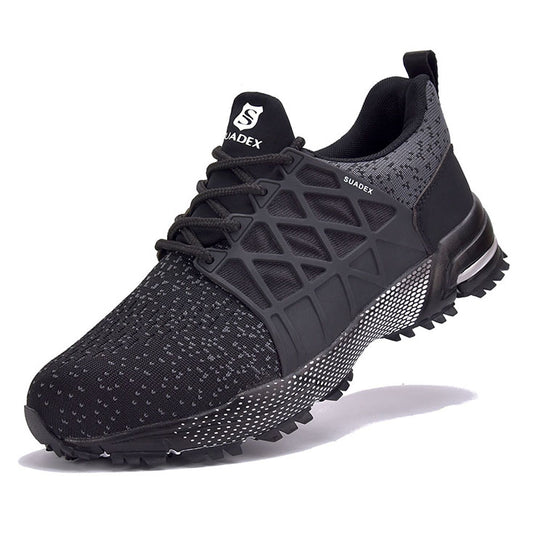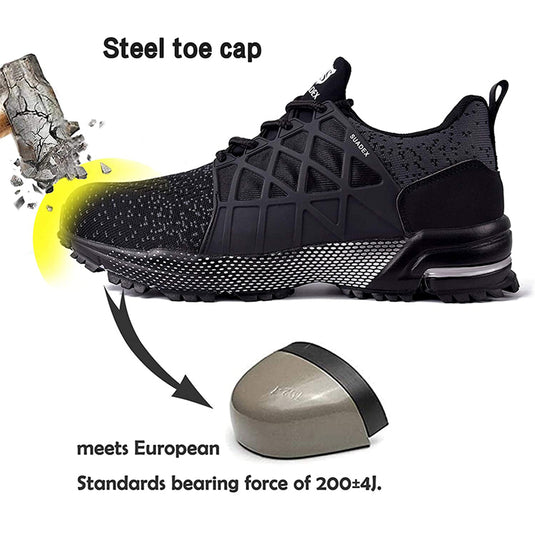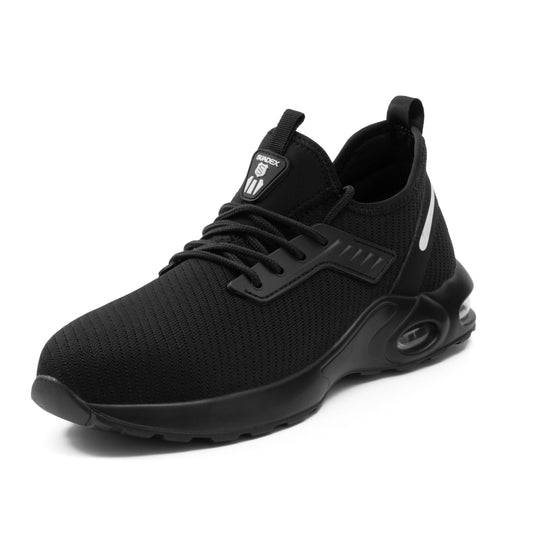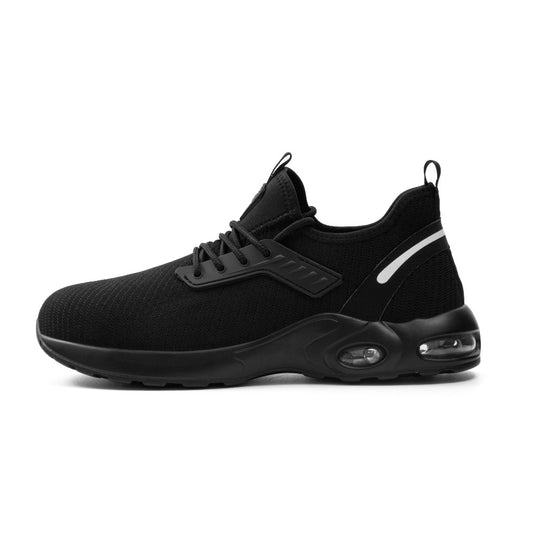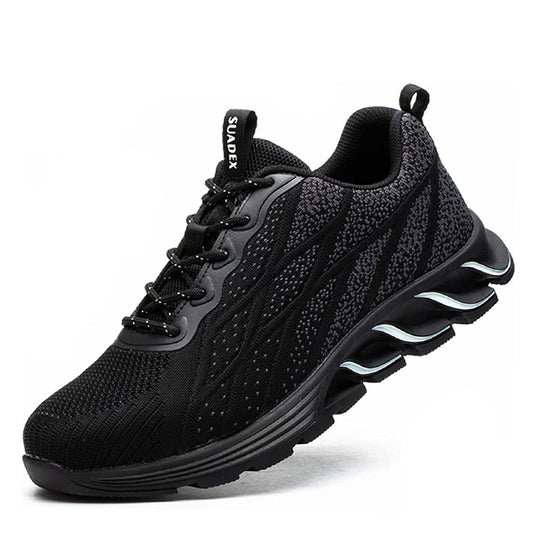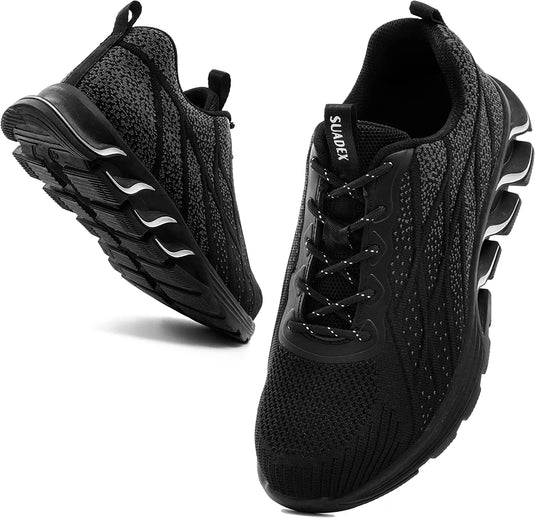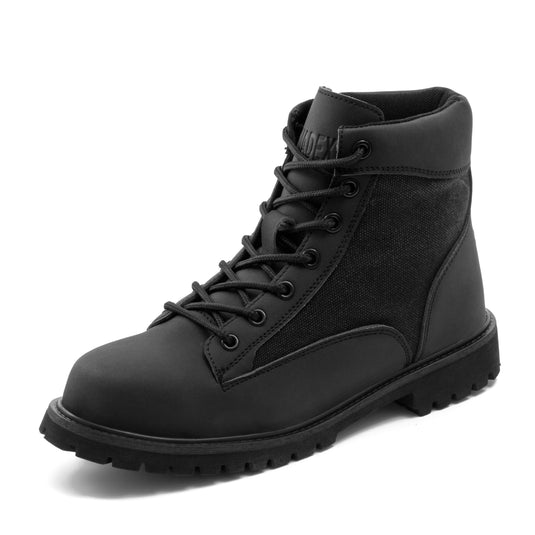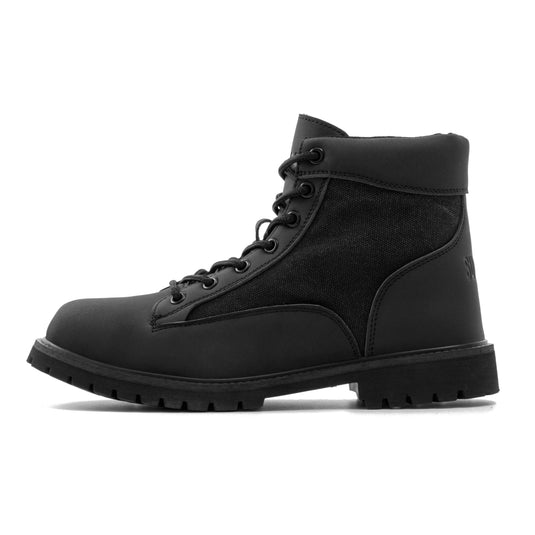Here are some key factors to consider when choosing shoes:
Steel toes prevent falling objects, which can cause 60% of foot injuries. If there is an electrical hazard, a fiberglass toe should be used instead of a typical steel toe.
Good traction can prevent slipping. According to the Bureau of Labor Statistics, in 1994, about 329,000 working days were lost. Depending on the environment, consider using non-slip nails or soles with frosted, frosted, grooved, spiked or studded shoes.
Appropriate chemical protection. Boots and shoes made of rubber, PVC or neoprene (depending on the chemical) are required.
Staff comfort. If the shoes are clumsy or heavy, they will probably not be worn. Only when you provide adequate protection for all footwear to be considered, can you provide workers with the choice of footwear color and style.

When purchasing safety shoes, make sure that the following qualities have been applied:
The inside of the shoe must be straight from the heel to the end of the big toe
Shoes must hold the heel tightly
The front must allow free movement of the toes
The shoes must be fixed on the instep to prevent the feet from slipping when walking
The heel of the shoe must be low and wide. Recommended flat shoes
People who buy work footwear should follow the following recommendations:
Don't expect too tight shoes to stretch as they wear out
When you buy shoes, you need to measure your feet-the size of the feet is usually different
Buy shoes to fit bigger feet
Buy shoes later in the afternoon because your feet are most likely to swell
When work requires walking or standing on a hard floor, consider purchasing a shock-absorbing insole (Foot Protection, 2017)
Types of protective shoes include:
Steel toe shoes-protects the toes from being dropped and crushed by objects
Tar shoes-contains special protective devices from ankle to toe to protect the entire foot
Reinforced sole – protects the foot from punctures
Latex or rubber footwear – resistant to chemicals and provides extra traction on smooth surfaces
Footwear in the workplace provides multiple protections for workers. For these reasons alone, it is worth incorporating foot protection procedures into your workplace. By seeking advice from the workplace, it can provide collaboration, industry partnerships and transparency. This is also a part of the negotiation process. During the negotiation process, the workers should be held responsible and the protective shoes required by local laws and regulations should be observed.
When designing strategies to protect foot injuries, the basic principles of occupational health and safety must be remembered: those occupational hazards should be fundamentally eliminated. The role of personal protective equipment is to minimize exposure to specific occupational hazards, not eliminate them. Protective shoes cannot guarantee full protection.
All work shoes should also provide comfort without compromising protection, and be suitable to ensure their functionality and feasibility, and include the following parameters:
From the toes to the natural bending of the feet, the steel toe cap should cover the entire length of the toes. Cushions covering the edges of the toes increase comfort. If the toe is cut into the foot, the size or style of the shoe is incorrect.
The soles come in various thicknesses and materials. They need to be selected according to the hazard and type of floor in the workplace.
There are many materials for the upper of protective shoes. The selection should take into account the hazards of the feet and individual characteristics.
A steel midsole that prevents the foot from being penetrated by sharp objects should be flexible enough to allow the foot to bend.
No type of non-slip shoes can prevent the wearer from slipping on every surface.
Your country may need to consider legal requirements, so please check local regulations and rules. It may be similar to the following:
OSHA regulations for employee footwear are located at 29 CFR 1910.132 and 1910.136. Generally, the standard requires the use of foot protection when necessary in a process that may cause foot injuries or environmental hazards. OSHA Standard 29 CFR 1910.136 (a) provides:
Employers should ensure that when working in hazardous areas where affected employees cause foot injuries due to falling or rolling objects or puncturing the soles, or when using protective shoes to protect the affected employees from injury, each affected Employees uses protective shoes. After the employer adopts other necessary protective measures, there are still electrical hazards, such as electrostatic discharge or electric shock.
Correct footwear is important not only for foot comfort but also for people's overall health. Inappropriate footwear can cause or exacerbate existing foot problems. Unfortunately, sometimes fashion is preferred over choosing the right, supportive safety shoes. However, the safety shoes produced by many safety shoe manufacturers do look fashionable.

The best way to involve workers in plans to protect their feet is to provide:
Training and information on the health hazards of wearing inappropriate shoes
The principle of choosing the right shoes
Simple rules for general foot care
Orthotics may help reduce foot problems
It is important to ensure that the organization providing safety equipment is suitable for the purpose or use. This meets the requirements to ensure that the right scope of work is selected. Doing so can improve safety and comfort, which will make your workers and their feet happy too!
Steel toes prevent falling objects, which can cause 60% of foot injuries. If there is an electrical hazard, a fiberglass toe should be used instead of a typical steel toe.
Good traction can prevent slipping. According to the Bureau of Labor Statistics, in 1994, about 329,000 working days were lost. Depending on the environment, consider using non-slip nails or soles with frosted, frosted, grooved, spiked or studded shoes.
Appropriate chemical protection. Boots and shoes made of rubber, PVC or neoprene (depending on the chemical) are required.
Staff comfort. If the shoes are clumsy or heavy, they will probably not be worn. Only when you provide adequate protection for all footwear to be considered, can you provide workers with the choice of footwear color and style.

When purchasing safety shoes, make sure that the following qualities have been applied:
The inside of the shoe must be straight from the heel to the end of the big toe
Shoes must hold the heel tightly
The front must allow free movement of the toes
The shoes must be fixed on the instep to prevent the feet from slipping when walking
The heel of the shoe must be low and wide. Recommended flat shoes
People who buy work footwear should follow the following recommendations:
Don't expect too tight shoes to stretch as they wear out
When you buy shoes, you need to measure your feet-the size of the feet is usually different
Buy shoes to fit bigger feet
Buy shoes later in the afternoon because your feet are most likely to swell
When work requires walking or standing on a hard floor, consider purchasing a shock-absorbing insole (Foot Protection, 2017)
Types of protective shoes include:
Steel toe shoes-protects the toes from being dropped and crushed by objects
Tar shoes-contains special protective devices from ankle to toe to protect the entire foot
Reinforced sole – protects the foot from punctures
Latex or rubber footwear – resistant to chemicals and provides extra traction on smooth surfaces
Footwear in the workplace provides multiple protections for workers. For these reasons alone, it is worth incorporating foot protection procedures into your workplace. By seeking advice from the workplace, it can provide collaboration, industry partnerships and transparency. This is also a part of the negotiation process. During the negotiation process, the workers should be held responsible and the protective shoes required by local laws and regulations should be observed.
When designing strategies to protect foot injuries, the basic principles of occupational health and safety must be remembered: those occupational hazards should be fundamentally eliminated. The role of personal protective equipment is to minimize exposure to specific occupational hazards, not eliminate them. Protective shoes cannot guarantee full protection.
All work shoes should also provide comfort without compromising protection, and be suitable to ensure their functionality and feasibility, and include the following parameters:
From the toes to the natural bending of the feet, the steel toe cap should cover the entire length of the toes. Cushions covering the edges of the toes increase comfort. If the toe is cut into the foot, the size or style of the shoe is incorrect.
The soles come in various thicknesses and materials. They need to be selected according to the hazard and type of floor in the workplace.
There are many materials for the upper of protective shoes. The selection should take into account the hazards of the feet and individual characteristics.
A steel midsole that prevents the foot from being penetrated by sharp objects should be flexible enough to allow the foot to bend.
No type of non-slip shoes can prevent the wearer from slipping on every surface.
Your country may need to consider legal requirements, so please check local regulations and rules. It may be similar to the following:
OSHA regulations for employee footwear are located at 29 CFR 1910.132 and 1910.136. Generally, the standard requires the use of foot protection when necessary in a process that may cause foot injuries or environmental hazards. OSHA Standard 29 CFR 1910.136 (a) provides:
Employers should ensure that when working in hazardous areas where affected employees cause foot injuries due to falling or rolling objects or puncturing the soles, or when using protective shoes to protect the affected employees from injury, each affected Employees uses protective shoes. After the employer adopts other necessary protective measures, there are still electrical hazards, such as electrostatic discharge or electric shock.
Correct footwear is important not only for foot comfort but also for people's overall health. Inappropriate footwear can cause or exacerbate existing foot problems. Unfortunately, sometimes fashion is preferred over choosing the right, supportive safety shoes. However, the safety shoes produced by many safety shoe manufacturers do look fashionable.

The best way to involve workers in plans to protect their feet is to provide:
Training and information on the health hazards of wearing inappropriate shoes
The principle of choosing the right shoes
Simple rules for general foot care
Orthotics may help reduce foot problems
It is important to ensure that the organization providing safety equipment is suitable for the purpose or use. This meets the requirements to ensure that the right scope of work is selected. Doing so can improve safety and comfort, which will make your workers and their feet happy too!


